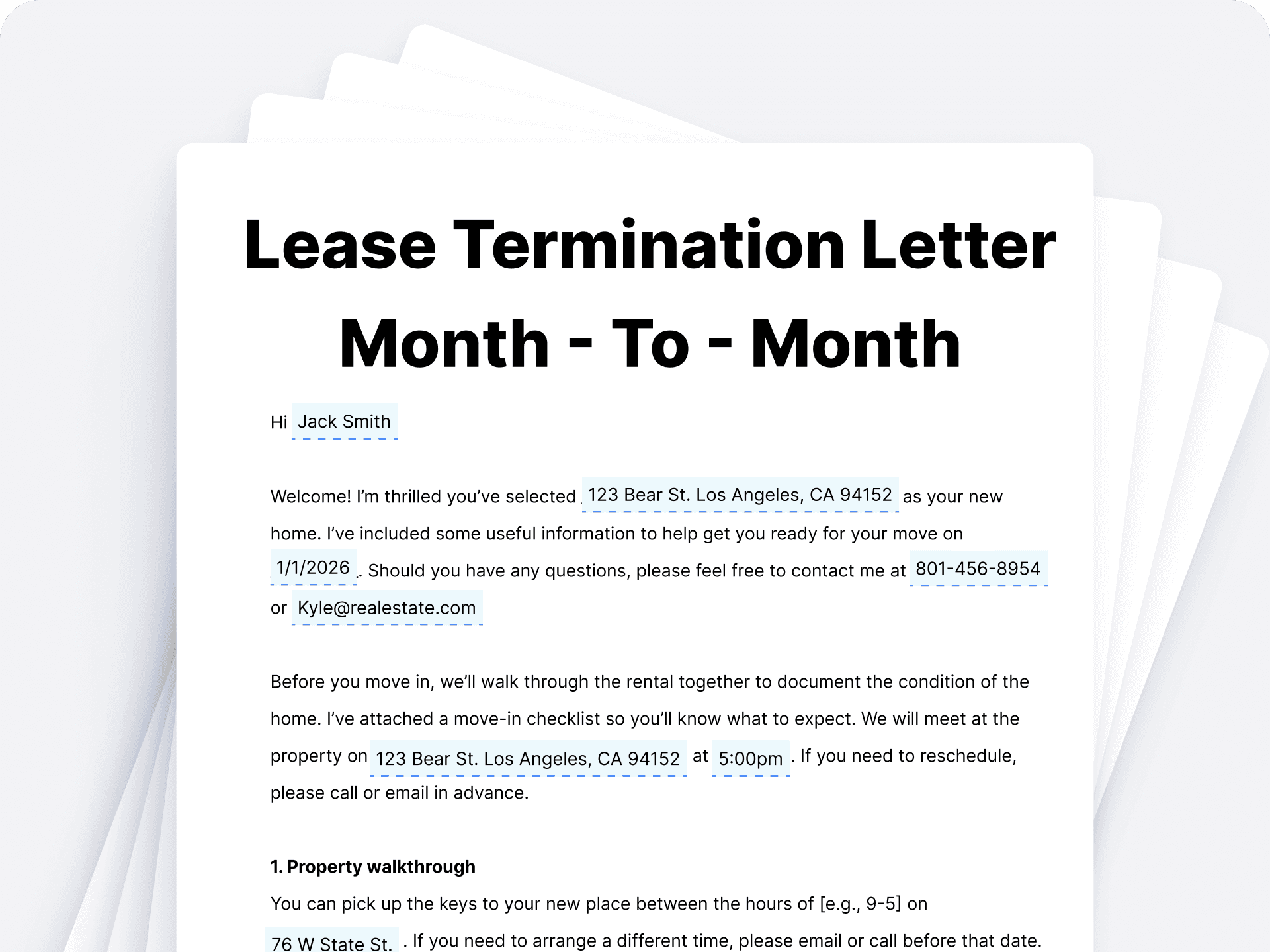Lease Termination Letter For Month-To-Month Lease
A lease termination letter is a formal document used by either a landlord or tenant to notify the other party of the intent to end a rental agreement. This letter is particularly relevant in month-to-month leases, which are typically open-ended and do not specify a termination date.
Purpose of a Lease Termination Letter
The lease termination letter serves several important functions:
- It provides clear notice of the intent to terminate the lease.
- It protects both parties in case of future disputes regarding the lease status.
- It ensures compliance with state laws regarding notice periods.
Types of Lease Termination Letters
- Lease Termination Letter: Used to end a month-to-month lease.
- (Early) Lease Termination Letter: Used to cancel a fixed lease before its end date.
- Eviction Notice (Notice to Quit): Issued by a landlord if the tenant has violated the lease.
How to Terminate a Lease
Step 1: Review State Notice Requirements
Each state has specific laws regarding the notice period required to terminate a lease. The most common notice period is 30 days, but it can vary significantly based on state regulations and the type of lease. For example:
- California: 30 days if tenancy is 1 year or less; 60 days if more than 1 year.
- Colorado: 91 days for a tenancy of 1 year or longer; 28 days for a tenancy of 6 months or longer but less than 1 year.
- New York: 30 days.
- North Carolina: 7 days.
Step 2: Write the Termination Letter
The termination letter should include the following elements:
- Date of the letter.
- Rental property address.
- Names of the parties involved.
- Reference to the original rental agreement.
- Date the tenant should vacate the premises.
- Reason for termination (optional but recommended for clarity).
- Forwarding address for the return of the security deposit.
Step 3: Deliver the Letter
The letter should be delivered using one of the following methods:
- Personal Delivery: Handing the letter directly to the other party.
- Certified Mail: Sending via certified mail with a return receipt to confirm delivery.
Step 4: Prepare to Move Out
The tenant must vacate the property by the end of the notice period. If they do not vacate, the landlord may initiate eviction proceedings.
Lease Termination vs. Eviction
Key Differences
- Initiating Party: Either party can initiate a lease termination; only the landlord can initiate an eviction.
- Nature: Lease termination is voluntary, while eviction is a legal process often due to lease violations.
- Outcome: Lease termination results in a mutual understanding and voluntary departure; eviction can lead to legal penalties for the tenant.
Understanding the process and requirements for lease termination is essential for both landlords and tenants to ensure compliance with state laws and to avoid potential disputes.
